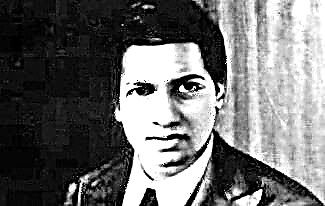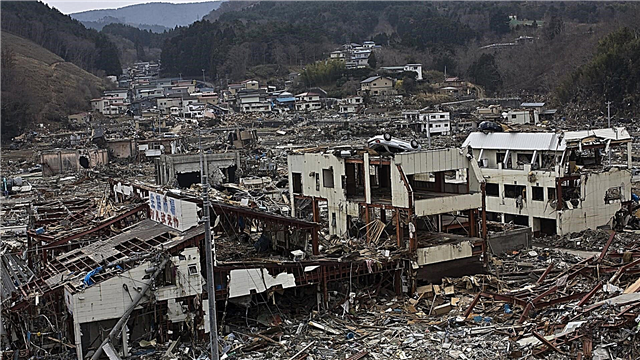Until recently, two polar theories stood out in the description of the history and life of the ancient Slavs. According to the first, more academic, before the light of Christianity shone over the Russian lands, rather wild pagan people lived in the wild steppes and wild forests. They, of course, plowed something, sowed and built something, but in isolation from some kind of world civilization that had gone far ahead. The adoption of Christianity hastened the development of the Slavs, but the existing lag cannot be overcome. Therefore, you must stop looking for your own path. We need to develop, repeating the path of civilized countries.
The second point of view arose, most likely, as a reaction to the first, which is largely dismissive (if you do not want to use the word “racist”). According to the supporters of this theory, the Slavs created the first language, from which all the others descended. The Slavs conquered the whole world, as evidenced by the Slavic roots of geographical names in all corners of the globe, etc.
The truth, contrary to popular saying, does not lie in the middle. The Slavs developed in about the same way as other peoples, but under the great influence of natural and geographical factors. For example, the Russian bow is a source of pride for many researchers. Composed of several parts, it is much more powerful and more accurate than the English bow famed by Robin Hood and the Battle of Crécy. However, in the then wooded England, a bow, striking 250 meters, was needed only for competitions. And in the steppe part of Russia, a long-range bow was needed. Even such a trifle as different bows speak not about the ability of peoples to develop, but about different conditions of existence. They greatly influenced the lifestyle and religious beliefs of various peoples.
A necessary caveat: “Slavs” is a very general concept. Scientists have united dozens of peoples under this name, while frankly admitting that only the initial language can be common among these peoples, and even then with reservations. Strictly speaking, the Russians learned that they, the Bulgarians, the Czechs, and the Slavs, only with the development of linguistics and the growth of the political consciousness of peoples in the 18th-19th centuries. Therefore, it makes no sense to talk about some common features among all Slavic peoples. The facts given in this collection concern the Slavs who lived in the territory of present-day Belarus, Ukraine and the European part of Russia. According to the classification of linguists, these are the Eastern Slavs.

1. The ancient Slavs had a very harmonious system explaining, albeit at a rather primitive level, the structure of the universe. The world, according to their beliefs, is like an egg. The earth is the yolk of this egg, surrounded by shell-skies. There are 9 such heavenly shells. The Sun, Moon-Moon, clouds, clouds, winds and other celestial phenomena have special shells. In the seventh shell, the lower boundary is almost always solid - this shell contains water. Sometimes the shell opens or breaks - then it rains of varying intensity. Somewhere far, far away, the World Tree is growing. On its branches, specimens of everything living on earth grow, from small plants to huge animals. Migratory birds go there, in the crown of the tree, in autumn. Alternatively, there is an Island in heaven where plants and animals live. If the heavens want it, they will send down animals and plants to people. If people will treat nature badly, let them prepare for hunger.
2. The address “Mother Earth” is also from the beliefs of the ancient Slavs, in which Heaven was the father and the Earth was the mother. Father's name was Svarog or Stribog. It was he who gave the people who had lived in the Stone Age, fire and iron. The land was called Mokosh or Mokosh. It is reliably known that she was in the pantheon of Slavic deities - the idol stood in the Kiev temple. But what exactly Makosh patronized is a matter of dispute. For modern lovers to dissect ancient names, based on the norms of the modern Russian language, everything is simple: “Ma-”, of course, “Mama”, “-kosh” is a wallet, “Makosh” is a mother-keeper of all riches. Slavic scholars, of course, have a dozen of their own interpretations.
3. The notorious swastika is the main symbol of the Sun. It was widespread throughout the world, including among the Slavs. Initially, it was just a cross - under some atmospheric conditions, a cross can be seen on the Sun and next to it. Later, narrower symbols were put into the cross as a symbol of the Sun. A dark cross on a light background is a symbol of the “bad,” night sun. Light on dark is the opposite. To give the symbol dynamics, crossbars were added to the ends of the cross. It’s just over the ages that the specifics were lost, and now it is not known whether the rotation in which direction made the swastika a positive symbol. However, after the well-known events of the mid-twentieth century, the swastika has only one and only interpretation.
4. Two such useful professions, as a blacksmith and a miller, had completely opposite assessments in the beliefs of the Slavs. Blacksmiths received their skill almost directly from Svarog, and their craft was considered very worthy. Hence, the image of the Blacksmith in numerous fairy tales is almost always a positive, strong and kind character. The miller, in fact, doing the same work on the first processing of raw materials, always seems greedy and cunning. The difference is that blacksmiths dealt with a tamed fire that personified the Sun, while millers profited from the opposites of the Sun - Water or Wind. Probably, if the blacksmiths had earlier had the ingenuity to use the energy of water to raise the hammer, the mythology would have developed differently.
5. The process of bearing and giving birth to a child was surrounded by a huge number of customs and rituals. Pregnancy was initially supposed to be hidden, so that sorcerers or witches did not replace the fetus with their own. When it became impossible to hide the pregnancy, the expectant mother began to show all kinds of attention and remove her from the most difficult work. Closer to childbirth, the expectant mother began to slowly isolate. It was believed that childbirth is the same death, only with the opposite sign, and it is not worth attracting the attention of the other world to them. Therefore, they gave birth in a bathhouse - away from a residential building, in a clean place. Of course, there was no professional obstetric aid. For the role of the midwife - a woman who tied up, “twisted” the baby's umbilical cord with a thread - they took one of the relatives who had already given birth to several children.
6. The newborns were dressed in a shirt made from the clothes of their parents, with the son receiving the clothes from the father and the daughter from the mother. In addition to the hereditary value, the first clothes were also purely practical. The infant mortality rate was very high, so they were in no hurry to spend clean linen on the clothes of infants. Children received clothes corresponding to the sex in adolescence, after the initiation ceremony for boys.
7. The Slavs, like all ancient peoples, were very scrupulous about their names. The name given to a person at birth was usually known only to family members and close acquaintances. Nicknames were used more, which were later transformed into surnames. They preferred the nicknames to have a negative characteristic, so that the evil spirits did not stick to the person. Hence the abundance of the prefixes "Not" and "Without (s) -" in Russians. They call a person “Nekrasov”, so he is ugly, what can you take from him? And from the "Unchaste"? Somewhere in this scrupulousness lie the roots of the rule of etiquette, according to which two people must be introduced by someone else. The acquaintance, as it were, certifies the real names, and not the nicknames of the people they met.
8. At a Slavic wedding, the bride was the central figure. It was she who got married, that is, left her family. For the groom, the wedding was only a sign of a change in status. The bride, on the other hand, when she marries, seems to be dying for her kind and reborn in another. The tradition of taking the husband's surname goes back precisely to the views of the Slavs.

9. Very often, during excavations of ancient settlements, horse skulls are found. So they sacrificed to the gods, starting the construction of a new house. Legends about human sacrifice have no such confirmation. And the horse skull was, most likely, a symbol - hardly anyone, even starting the construction of a large house, would have gone to such expenses. Under the first crown of the new building, the skull of a long-fallen or killed horse was buried.
10. The dwellings of the Slavs differed, first of all, depending on the natural conditions. In the south, the house was often dug into the ground to a depth of a meter. This saved building materials and cut firewood costs for heating. In more northern areas, houses were placed so that the floor was at least at ground level, and even better, so that higher ones were protected from abundant moisture. Log cabins, square in plan, were built already in the 8th century. The technology of such construction was so simple and inexpensive that it existed for a whole millennium. It was only in the 16th century that houses were sheathed with wood.
11. Saws were rarely used in housing construction, although this tool was already known in the 9th century. It's not about the backwardness of our ancestors. Wood hewn with an ax is much more resistant to decay - the ax thickens the fibers. The fibers of the sawn wood are shaggy, therefore such wood damp and rot faster. Even in the 19th century, contractors fined carpentry cooperatives if they did not use saws. The contractor needs a house to sell, its longevity is not interested.
12. There were so many signs, beliefs and superstitions that some procedures took several days. For example, a new house was moved in within a week. At first, a cat was allowed into a new home - it was believed that cats see evil spirits. Then they let animals into the house of the n degree of their importance for the economy. And only after the horse spent the night in the house, people, starting with the oldest, moved into it. The head of the family, entering the house, had to carry bread or dough. The hostess cooked porridge in the old dwelling, but not until ready - it should have been cooked in a new place.
13. Already from the 6th century, the Slavs heated their homes and cooked food on stoves. These stoves were “smoking”, “black” - the smoke went straight into the room. Therefore, for a long time the huts were without ceilings - the place under the roof was intended for smoke, the roof and top of the walls from the inside were black with soot and soot. There were no grates or stove plates. For cast iron and pans, a hole was simply left in the upper wall of the oven. It was by no means an absolute evil that the smoke escaped into the living quarters. The smoked wood did not rot and did not absorb moisture - the air in the chicken hut was always dry. In addition, soot is a powerful antiseptic that prevents the spread of colds.

14. "Upper room" - the best part of a large hut. She was fenced off from the room with a blank wall stove, which warmed up well. That is, the room was warm and there was no smoke. And the name of such a room, in which the most dear guests were received, received from the word "upper" - "upper", due to its location higher than the rest of the hut. Sometimes a separate entrance was made to the upper room.
15. The cemetery was not originally called a graveyard. The settlements, especially in the northern part of Russia, were small - a few huts. There was only enough room for permanent residents. As development progressed, some of them, especially those located in advantageous locations, expanded. In parallel, there was a process of property and professional stratification. Inns appeared, the administration was born. As the power of the princes grew, it became necessary to collect taxes and control this process. The prince chose several settlements in which there were more or less acceptable conditions for his living with his retinue, and appointed them as churchyards - places where you can stay. Various tributes were brought there. Once a year, usually in winter, the prince went round his churchyards, taking her away. So the churchyard is a kind of analogue of the tax administration. The word acquired a funeral connotation already in the Middle Ages.
16. The idea of Russia as a country of cities, "Gardarike", is drawn from the Western European chronicles. However, the abundance of cities, more precisely, “townships” - settlements fenced off by a palisade or a wall, does not directly speak of the abundance of the population or the high level of development of the territory. The Slavic settlements were relatively small and practically isolated from each other. For all the self-sufficiency of the then farms, some exchange of goods was nevertheless necessary. The places of these exchanges were gradually overgrown, as they would say now, with infrastructure: bargaining, barns, warehouses. And if the population of a small settlement, in case of danger, went into the forest, taking simple belongings, then the contents of the town had to be protected. So they built palisades, at the same time forming militias and hiring professional soldiers who permanently lived in Detinets - the most fortified part of the town. Cities subsequently grew out of many towns, but many have sunk into oblivion.
17. The first wooden pavement found in Novgorod was built at the beginning of the 10th century. Archaeologists have not found any earlier items in the city. It is known that after about a century the condition of the Novgorod pavements was monitored by special people who were exclusively engaged in this. And in the 13th century, a whole charter was already in force in Novgorod, which detailed the duties of the townspeople, the payment for the maintenance of the pavements, etc. on her. So the stories about the eternal impassable Russian mud are greatly exaggerated. Moreover, representatives of the peoples who diligently built up their cities with houses made of sticks and mud, called half-timbered houses, are especially zealous in exaggeration.
18. The real scourge of the female part of Slavic society was not the feisty mother-in-law, but the yarn. She accompanied the woman literally from birth to the grave. The umbilical cord of the newborn girl was tied with a special thread, and the umbilical cord was cut on a spindle. Girls began to learn how to spin not at a certain age, but as they grew physically. The first thread, produced by a young spinner, was saved before the wedding - it was considered a valuable talisman. There is, however, evidence that in some tribes the first thread was solemnly burned, and the ashes were stirred with water and given to the young craftswoman to drink. Labor productivity was extremely low. After harvesting, all the women made linen for at least 12 hours a day. At the same time, there was practically no surplus even in large families. Well, if a girl of marriageable age managed to sew a full set of dowry for herself, this immediately indicated that a diligent hostess was getting married. After all, she not only woven canvases, but also cut it out, sewed it, and even decorated it with embroidery. Of course, the whole family helped her, not without it. But even with the help, the weather girls were a problem - too tight a time frame to prepare two dowries.

19. The proverb “They meet by their clothes…” does not mean that a person should make the best impression with his appearance. In the clothes of the Slavs there were many elements indicating belonging to a certain genus (this was a very important factor), social status, profession or occupation of a person. Accordingly, the attire of a man or a woman should not be rich or particularly elegant. It must correspond to the real status of the person. For violation of this order, and could be punished. The echoes of such severity persisted for a very long time. For example, it is now fashionable to break spears for wearing a school uniform (by the way, in this case, it is non-functional - within the school walls it is clear that a child walking towards you is a student).But even at the beginning of the twentieth century, high school students and high school girls were required to wear uniforms and dresses everywhere, except for home walls. Those who were noticed in other clothes were punished - you do not correspond to the status of the clothes, please, in the cold ...
20. Even before the advent of the Varangians and Epiphany, the Slavs were actively engaged in foreign trade. Coins dating from the first centuries of the new era are found everywhere on their territory. Campaigns to Constantinople were carried out with the banal purpose of knocking out the best conditions for trade. Moreover, the Slavs were engaged in the export of products that were quite complex for that time. Finished leather, fabric, and even iron were sold to Northern Europe. At the same time, Slavic merchants transported goods on ships of their own construction, but shipbuilding remained for a long time the focus of the highest technologies, the current analogue of the rocket and space industry.









